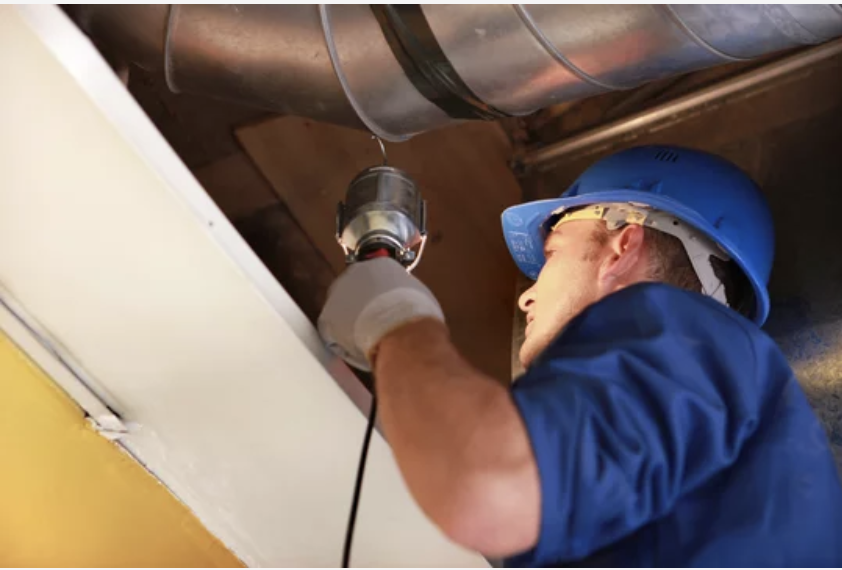How Attic Insulation and Air Sealing Improve Energy Efficiency

Air sealing is a process of reducing air leaks in your home that can significantly improve its comfort, energy efficiency, and indoor air quality. Attic insulation helps reduce the amount of heat transfer between the attic and other parts of your home, but it won’t do anything to stop air from passing through cracks and gaps in your walls and ceiling. Air sealing your home is the critical final step in the process of Attic Insulation.
Creating a sealed home
Homeowners may not be aware of the significant role that an appropriate home envelope plays in improving indoor comfort levels and energy bill costs. This “envelope” simply separates interior, conditioned spaces from external ones; for example, your kitchen against a garage or outside area. Properly sealing this boundary effectively prevents any outdoor air from entering indoors while enabling internal temperatures to remain regulated – saving both money and effort!
Decrease Energy Bills
Air leakage causes several issues that can be costly and inconvenient. Unsealed air leaks often result in uncomfortable drafts and temperature inconsistencies throughout your house, causing you to needlessly spend more money on heating and cooling bills as air escapes through cracks and openings in your walls and ceiling. Air leakage can also cause moisture problems, as warm air from inside your home condenses on cold building materials located outside. Over time, this can lead to mold growth, wood rot, and even structural damage if not addressed.
Air Sealing Process
There are several areas of a house that should be sealed during the air sealing process. These include areas around windows and doors, attic hatches, vents and pipes, wires or cables that pass-through walls and ceilings, fireplaces, recessed lighting fixtures, baseboards, dryer vents, bathroom fans, and other exhaust fans. The goal is to identify any possible sources of air leakage in your home and seal them with caulk, expandable foam, weatherstripping and other materials.
Air sealing your house will not make it too stuffy or make you sick if done properly. In fact, air sealing can actually improve indoor air quality by reducing the amount of dust, pollen, mold spores, radon, and other pollutants that may enter through cracks in walls and ceilings.
Energy Efficiency
It’s a cost-effective way to make your home more comfortable and energy efficient. Attic Insulation combined with air sealing can reduce heating and cooling costs, eliminate drafts, improve indoor air quality, and even help prevent costly structural damage due to moisture buildup over time. Depending on the size of your house and the extent of air leakage, the average cost for air sealing can range from several hundred to several thousand dollars.
Fiberglass insulation is twice as effective when used in conjunction with air sealing the attic floor. This porous material allows for increased airflow, making a combination of fiberglass and an air-sealed space crucial to energy efficiency. Benefit from improved protection against environmental elements by adding extra steps during your installation process!
Air sealing is a powerful solution for energy conservation and home comfort. By blocking off cracks and gaps in your house, air sealing can help reduce drafts during the wintertime or keep your space cooler during the summer months- all while potentially lowering your energy costs! When combined with spray foam insulation, you’ll be sure to have an incredibly comfortable living environment that won’t break the bank.
Reduce Heat Transfer
While professional air sealing services are always recommended, there are some basic steps you can take yourself to reduce air leakage in your home. Start by inspecting the inside and outside of your house for potential sources of air leakage. Attic insulation can also help reduce heat transfer between the attic and other parts of your home. Then, caulk any cracks or gaps on the interior and exterior of your house where air could be escaping. You can also install weatherstripping around windows and doors, Attic insulation kits for DIYers, foam gaskets for electrical outlets, and other sealing materials.
Koala Insulation uses a variety of techniques to identify and seal air leaks in a home. These include blower door tests, infrared thermography, pressurizing the house with a fan, and using professional-grade sealing materials like expanding foam and caulk. Air sealing contractors also use specialized equipment such as thermal imaging cameras and pressure gauges to accurately detect sources of air leakage in a house.
Overall, air sealing is an important step in the Attic Insulation process that can improve your home’s comfort, energy efficiency, and indoor air quality. If done properly, you can save money on heating and cooling costs while also protecting your home from costly structural damage due to moisture buildup over time. With a little knowledge and some basic DIY steps, you can air-seal your home yourself. However, for professional results that meet building codes, it’s best to hire Koala Insulation.
Koala Insulation is a company that seeks to provide homeowners across the U.S. with money and energy-saving insulation services. We believe that every homeowner should have access to quality insulation, and our goal is to make sure that all homeowners have the opportunity to save on their energy bills and live in a more comfortable home. We offer a variety of insulation services, so you can choose the perfect option for your home, climate, budget, and other needs. Plus, we always educate our customers about the benefits of insulation so they can make an informed decision about their home improvement project.
Find Your Location


Get a quote



